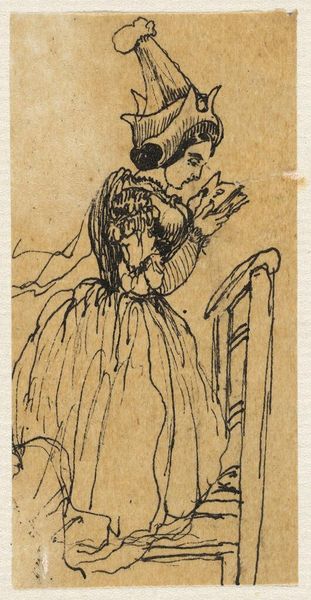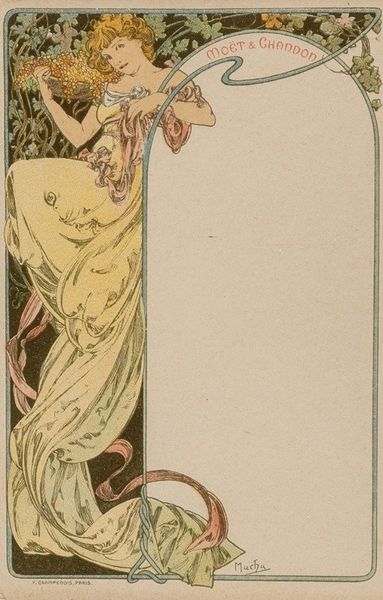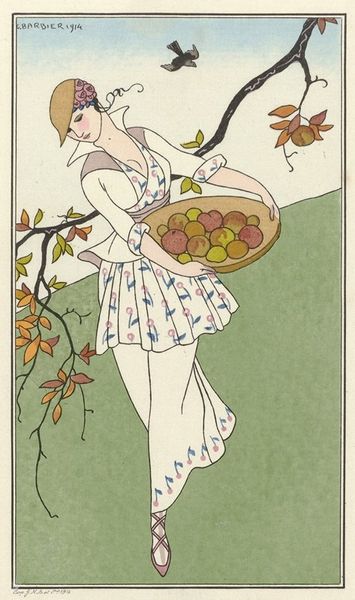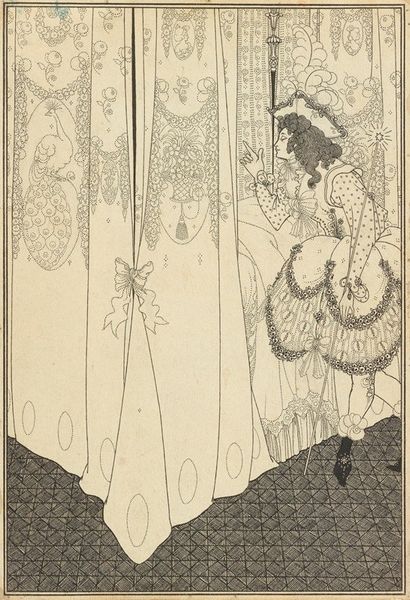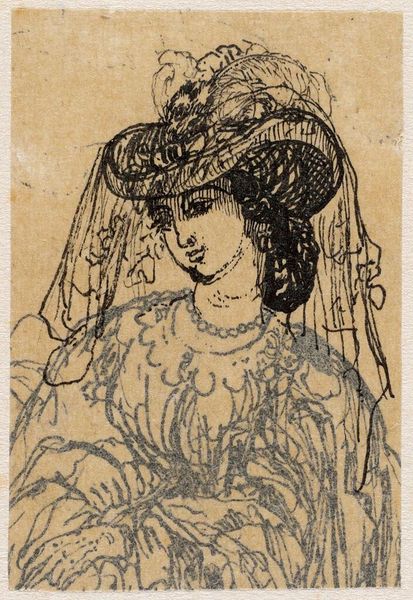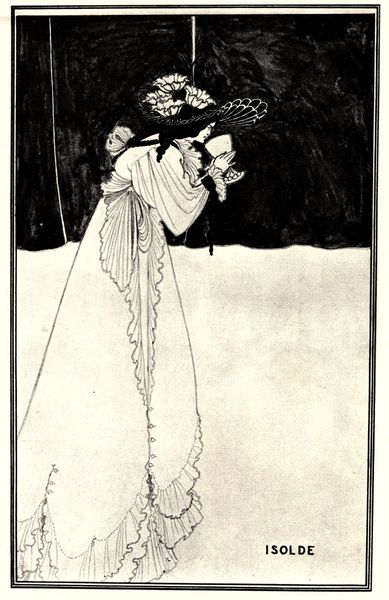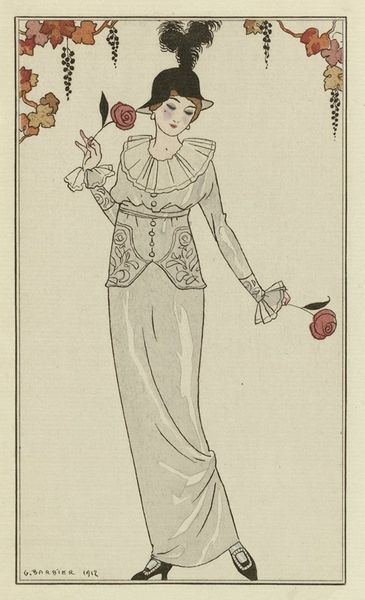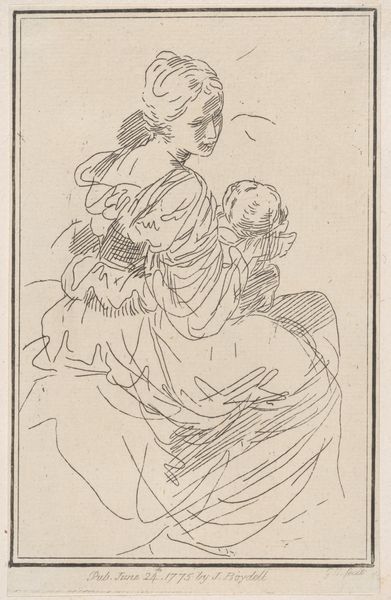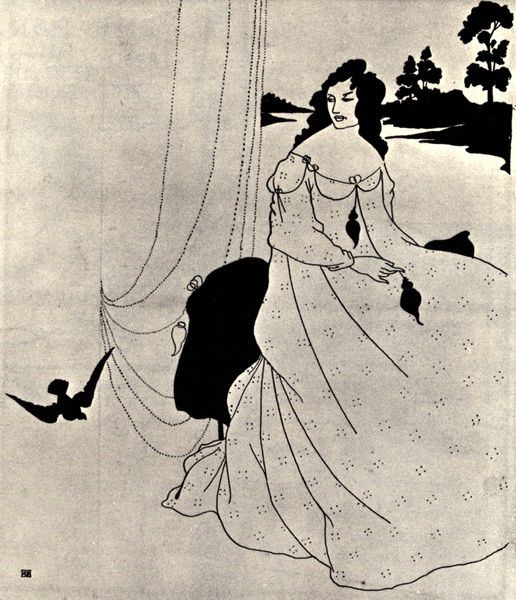
Copyright: Public Domain: Artvee
Editor: We're looking at Arthur Rackham's "Looking very undancey indeed," a watercolor and colored pencil drawing from 1913. It's quite delicate and detailed. The woman seems almost suspended in the space, not interacting with anything, despite her lovely patterned dress and the branches with fruit overhead. What do you see in this piece? Curator: Formally, the composition uses a limited tonal range, privileging delicate line work. Observe how Rackham defines form primarily through contour, using washes of watercolor to suggest volume rather than employing chiaroscuro in a traditional manner. Note also the contrast between the intricate patterns of the dress and the relative simplicity of the background and the woman’s face, creating a visual hierarchy. Editor: So, you are saying it's all about the formal relationships of shape and line? The composition? Curator: Precisely. Consider, also, how the artist articulates surface texture; the stippling in the foliage contrasts with the swirling patterns of the gown. Rackham prioritizes this play of visual elements over any narrative clarity, yes? Where would you see semiotic interplay? Editor: Good question. How about the way the drooping branches above mirror the slight droop of the woman’s shoulders? Is that intended to hint that her downcast mood somehow informs nature around her? Curator: I might challenge your insertion of subjective mood here, when a rigorous formal reading leads more obviously towards discussions about space and shape. What did you glean from our formalist analysis? Editor: That art offers visual relationships worth appreciating for their own sake. And I learned to focus on how the elements work together regardless of context or narrative. Thank you.
Comments
No comments
Be the first to comment and join the conversation on the ultimate creative platform.
